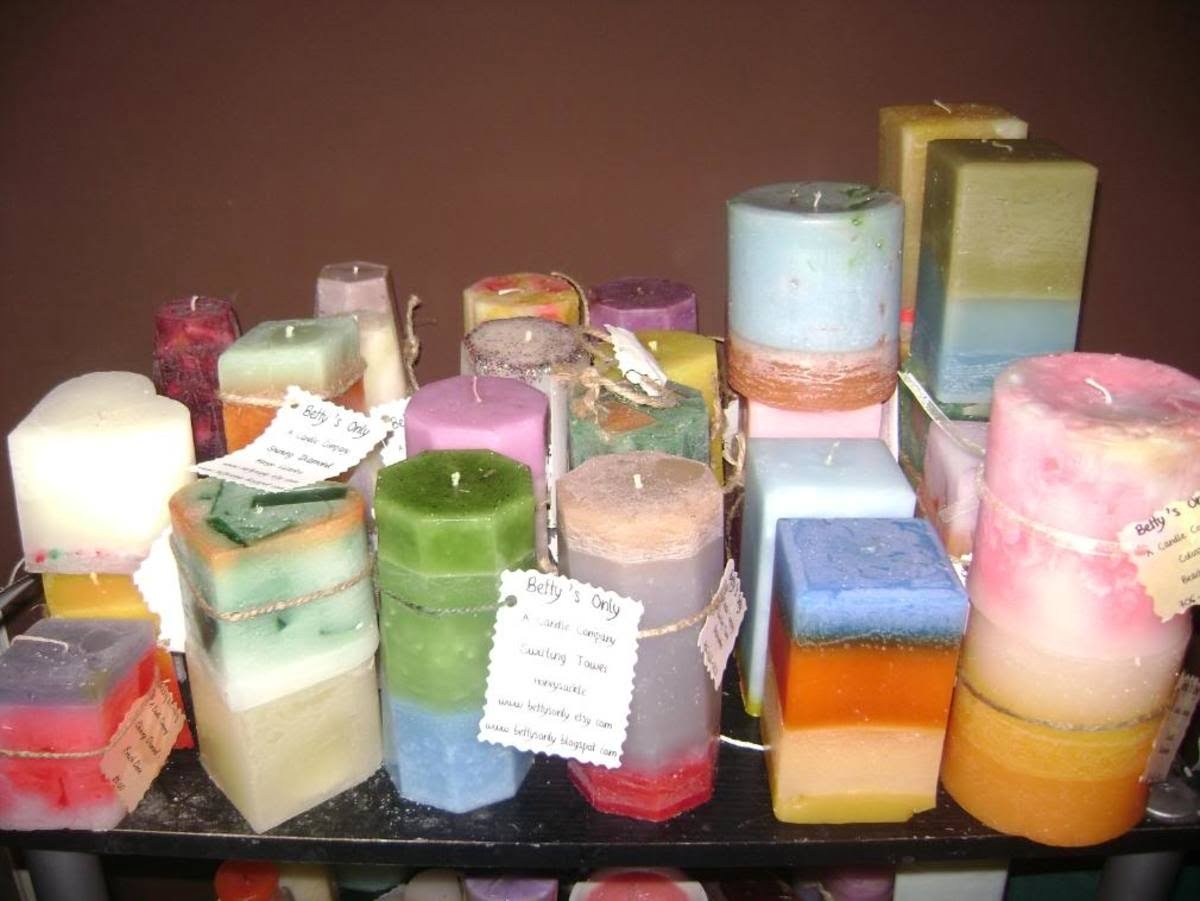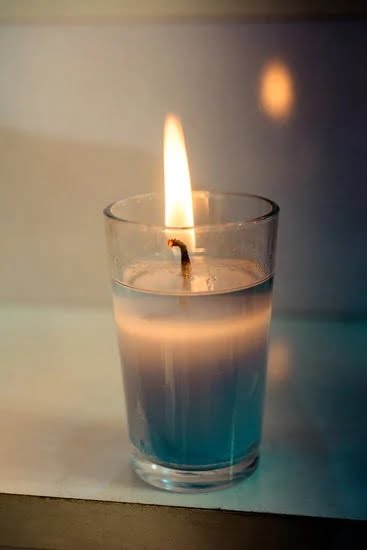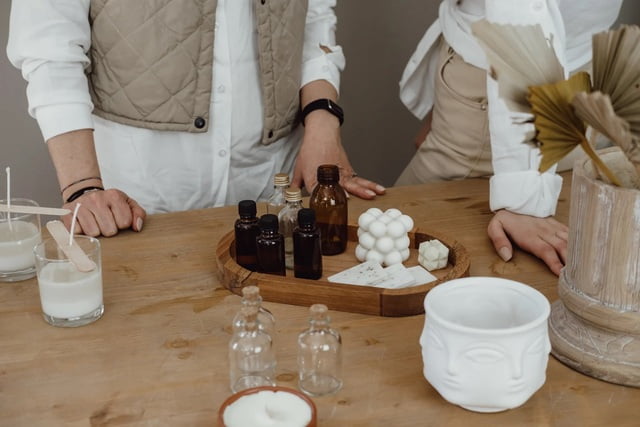Candle making methods have been used for centuries to create beautiful and fragrant candles for various purposes. Whether for relaxation, decoration, or even religious ceremonies, the art of candle making continues to be a popular craft around the world. In this article, we will explore the different techniques and approaches involved in creating your own candles using various candle making methods.
When it comes to candle making methods, there are numerous approaches and styles that can be used to craft unique and personalized candles. From traditional methods that have been practiced for generations to more modern techniques that incorporate innovative tools and materials, there is a wide range of options available for aspiring chandlers. Understanding the history of candle making and the various types of wax used can help guide you in choosing the right method for your needs.
In this comprehensive guide, we will delve into the rich history of candle making, explore the different types of wax commonly used in candle production, highlight essential tools and supplies needed for successful candle making, as well as discuss both traditional and modern candle making techniques. Additionally, we will touch on eco-friendly and sustainable practices in candle making, provide helpful tips and tricks for achieving successful results, and emphasize important safety precautions to ensure a safe crafting experience.
Whether you are a beginner or seasoned chandler, there is something in this article for everyone looking to embark on their own candle making journey.
History of Candle Making
The history of candle making dates back thousands of years, with early civilizations using various materials like animal fat, beeswax, and tallow to create light sources. The Egyptians are believed to have been one of the first civilizations to use candles, made from beeswax. These early candles were primarily used for religious ceremonies and as a source of light.
Medieval Candle Making
During the Middle Ages, candle making became more widespread throughout Europe. The most common material used during this time was tallow, which is rendered animal fat. Monasteries played a significant role in candle production during this period, where monks would meticulously craft candles for both illumination and religious purposes.
Industrial Revolution and Mass Production
The Industrial Revolution brought about significant changes in candle making methods. With the invention of the mechanical candle-making machine by Joseph Morgan in the 19th century, mass production of candles became possible. This revolutionized the industry, making candles more accessible and affordable to the general population. Paraffin wax also emerged as a popular alternative to traditional materials during this time.
Different Types of Wax Used in Candle Making
When it comes to candle making, the type of wax you choose plays a significant role in the overall quality and characteristics of your candles. There are several different types of wax commonly used in candle making, each with its own unique properties and benefits. Here are some of the most popular types of wax used by candle makers:
- Paraffin Wax: Paraffin wax is one of the most widely used waxes in candle making. It is affordable, easy to work with, and holds fragrance well. However, it is derived from petroleum, which may not be appealing to those looking for more natural options.
- Soy Wax: Soy wax is a natural alternative to paraffin wax, made from soybean oil. It is biodegradable, renewable, and has a clean burn. Soy wax also has a great scent throw but may be softer than other waxes.
- Beeswax: Beeswax is another natural option that gives off a warm glow and a subtle honey scent when burned. It has a longer burn time than other waxes but can be expensive compared to paraffin or soy wax.
In addition to these popular choices, there are also other types of waxes like palm wax, coconut wax, and gel wax that offer their own set of characteristics and advantages. When choosing the right type of wax for your candles, consider factors such as cost, burn time, scent throw, eco-friendliness, and personal preferences.
It’s important to note that each type of wax may require different candle making methods to achieve the best results. Whether you prefer traditional methods or modern techniques for candle making, experimenting with various waxes can help you find the perfect combination for creating beautiful and fragrant candles that suit your preferences and needs.
Essential Tools and Supplies for Candle Making
When it comes to creating your own candles, having the right tools and supplies is essential to ensure a successful and enjoyable candle making experience. From measuring ingredients to shaping the final product, each step in the process requires specific tools that can make a significant difference in the outcome of your candles.
One of the most crucial tools for candle making is a reliable double boiler or a dedicated wax melting pot. This allows you to melt your chosen wax safely and efficiently without burning it.
In addition to a double boiler, you will also need a good thermometer to monitor the temperature of the wax accurately. Maintaining the correct temperature is crucial in candle making as it can affect how well the fragrance binds with the wax and how evenly the candle burns. Other essential tools include stirring utensils, such as heat-resistant silicone spatulas or wooden sticks, which are necessary for blending fragrances and colors into the melted wax.
Having a selection of different molds or containers is also important for creating candles of various shapes and sizes. Whether you prefer classic pillar candles, container candles, or unique shaped candles, having an assortment of molds will give you creative freedom in designing your candles. Finally, safety equipment like heat-resistant gloves, goggles, and aprons should not be overlooked when working with hot wax and fragrances during the candle making process.
| Essential Tools | Supplies |
|---|---|
| Double boiler or wax melting pot | Wax material |
| Thermometer | Fragrances |
| Stirring utensils (spatulas or sticks) | Colors/dyes |
| Molds/containers | Safety equipment (gloves, goggles, aprons) |
Traditional Candle Making Methods
Candle making has a rich history, with traditional methods being passed down through generations. One of the oldest techniques for making candles is the dip method. In this process, a wick is repeatedly dipped into melted wax until the desired thickness is achieved. This method requires skill and patience but produces beautiful taper candles that have been popular for centuries.
Another traditional candle making method is the mold method. In this technique, melted wax is poured into a mold with a wick in the center. Once the wax hardens, the candle can be removed from the mold and trimmed as needed. Molded candles come in various shapes and sizes, allowing for endless creative possibilities.
Yet another classic way of making candles is the container method. This involves pouring melted wax directly into a container, such as a jar or tin, with a wick in place. Container candles are convenient and versatile, as they can easily be moved around and make great gifts. Each of these traditional candle making methods offers its own unique charm and allows crafters to explore their creativity in different ways.
Overall, traditional candle making methods provide a sense of connection to the past while also allowing individuals to create one-of-a-kind pieces that bring warmth and light into any space. Whether you prefer the simplicity of dipping candles or enjoy molding intricate designs, these techniques offer a timeless appeal that continues to captivate candle makers around the world.
Modern Candle Making Techniques
In recent years, the art of candle making has evolved significantly with the introduction of modern techniques that offer a more efficient and customizable approach to creating beautiful candles. Today, crafters and hobbyists have a wide array of methods at their disposal to explore their creativity and produce unique candles for personal use or as gifts for loved ones.
Use of Soy Wax and Beeswax
One of the innovations in modern candle making is the widespread use of soy wax and beeswax as alternatives to traditional paraffin wax. These natural waxes are not only eco-friendly but also offer a cleaner burn with less soot, making them a popular choice among environmentally conscious candle makers. Soy wax and beeswax can be easily blended with essential oils or fragrances to create scented candles that promote relaxation or invigoration.
Hand-Poured Candles
Hand-pouring candles has become a popular modern technique that allows for more personalized and artisanal creations. This method involves melting the wax, adding fragrance or colorants, then carefully pouring the mixture into molds or containers to set. Hand-poured candles often showcase unique textures and patterns, giving each candle its own distinctive charm. With hand-pouring, crafters can experiment with different designs, layering techniques, and color combinations to achieve one-of-a-kind pieces.
Using UV Resin for Embedding
Another modern technique gaining traction in candle making is the use of UV resin for embedding objects within candles. Whether it’s dried flowers, gemstones, shells, or other decorative items, embedding these elements adds a creative touch to candles.
By pouring layers of wax mixed with UV resin into molds and strategically placing the embedded objects before curing them under a UV light, crafters can create stunning visual effects in their candles. This technique allows for endless possibilities in design and personalization.
As technology continues to advance, we can expect even more innovative approaches to candle making that blend traditional craftsmanship with contemporary convenience. Whether you’re a seasoned crafter or just starting out on your candle making journey, exploring these modern techniques can inspire you to create candles that are not only visually appealing but also reflect your unique style and personality.
Eco-Friendly and Sustainable Candle Making Practices
Candle making has been a beloved craft for centuries, but with growing concerns about environmental impact, many candle makers are now turning to eco-friendly and sustainable practices. These methods not only reduce harm to the planet but also promote a more conscious approach to crafting. Here are some ways in which you can make candles while being mindful of the environment:
- Use soy wax or beeswax: Instead of traditional paraffin wax, opt for soy wax or beeswax as they are renewable resources that have less of an impact on the environment.
- Choose natural wicks: Look for wicks made from organic cotton, wood, or hemp instead of those containing metal or chemicals that can release harmful substances when burned.
- Reuse containers: Instead of buying new jars and containers for your candles, consider upcycling old ones from around your home or purchasing reusable ones that can be refilled multiple times.
In addition to these practices, another eco-friendly approach to candle making is utilizing essential oils for fragrance instead of synthetic fragrances that can contain harmful chemicals. By using essential oils derived from plants, you not only avoid potential toxins but also support sustainable farming practices. Additionally, choosing biodegradable packaging materials and recycling leftover wax can further reduce waste and promote a greener way of crafting candles.
- Incorporate natural elements: Add dried flowers, herbs, or other botanicals to your candles for a unique touch and embrace nature-inspired designs in your creations.
- Consider the carbon footprint: Think about the energy consumption involved in your candle making process and look for ways to minimize waste and energy usage wherever possible.
By adopting these eco-friendly and sustainable candle making practices, not only do you create beautiful and aromatic candles but also contribute towards a more environmentally-conscious approach to crafting. With a little creativity and mindfulness, it is possible to enjoy the art of candle making while treading lightly on the planet.
Tips and Tricks for Successful Candle Making
When it comes to creating beautiful and fragrant candles, there are a few tips and tricks that can help ensure your candle making endeavors are successful. One important factor to consider is the type of wax you use.
Different waxes have varying melting points and burn characteristics, so it’s essential to choose the right wax for your desired candle outcome. Experimenting with various types of wax, such as soy wax, paraffin wax, or beeswax, can help you determine which works best for your needs.
In addition to selecting the right wax, another key aspect of successful candle making is choosing high-quality fragrance oils or essential oils. The scent of a candle plays a significant role in its appeal, so be sure to carefully measure and mix your chosen fragrance oils to achieve the perfect scent throw. Remember that less is often more when it comes to adding fragrance oils, as overpowering scents can be off-putting.
Furthermore, mastering the art of color mixing can take your candle making skills to the next level. Whether you prefer vibrant hues or subtle pastels, using dye chips or liquid dyes in controlled amounts can help you achieve your desired color palette.
Keep in mind that some colors may behave differently when mixed with certain waxes, so don’t be afraid to experiment and find what works best for your creations. By paying attention to these tips and tricks for successful candle making, you’ll be well on your way to crafting stunning candles that captivate all who encounter them.
Safety Precautions for Candle Making
When engaging in the art of candle making, it is crucial to prioritize safety above all else. Whether you are a seasoned candle maker or just starting out, following the necessary precautions can help prevent accidents and ensure a successful and enjoyable candle-making experience.
To begin with, always work in a well-ventilated space to avoid inhaling fumes from melting wax and fragrances. Proper ventilation not only keeps the air quality safe but also reduces the risk of fire hazards.
One essential safety measure in candle making is to use appropriate protective gear, including gloves and safety goggles, especially when handling hot wax or dyes. Additionally, keep a fire extinguisher nearby as a precautionary measure in case of any unexpected flare-ups. Always pay close attention to the temperature of the melted wax and keep a thermometer handy to monitor it throughout the process. This helps prevent overheating, which can lead to combustion.
Furthermore, when working with fragrance oils and dyes, make sure to follow recommended guidelines for usage amounts as excessive additives can affect the quality and safety of your candles. It is also important to store all candle-making supplies properly, away from heat sources or open flames. By adhering to these safety precautions for candle making methods, you can create beautiful candles while keeping yourself and your workspace safe from potentially dangerous situations.
Conclusion
In conclusion, when it comes to choosing the right candle making method for you, there are a variety of factors to consider. Whether you opt for traditional techniques that have been used for centuries or modern methods that involve innovative tools and materials, the key is to find what works best for your preferences and needs. Experimenting with different types of wax, such as soy or beeswax, can also play a significant role in determining the outcome of your candles.
Additionally, eco-friendly and sustainable candle making practices are becoming increasingly popular among crafters who are conscious of their environmental impact. By using natural ingredients and recyclable materials, you can create beautiful candles that not only enhance your space but also contribute to a more sustainable lifestyle. It’s important to stay informed about the latest trends and developments in the world of candle making to ensure that you are incorporating safe and ethical practices into your craft.
Overall, whether you are a beginner or an experienced candle maker, the key is to enjoy the process of creating something beautiful with your own hands. With the right tools, supplies, and knowledge at your disposal, you can embark on a fulfilling journey into the art of candle making. So go ahead and explore different techniques, experiment with various styles, and most importantly, have fun expressing your creativity through the timeless craft of candle making.
Frequently Asked Questions
What Are the Different Method of Making Candles?
There are various methods of making candles, including the traditional hand-dipping method, container candles that utilize wax poured into containers, pillar candles that are molded or carved, and votive candles made in small containers. Each method requires different techniques and materials to produce unique types of candles.
How Do You Make High Quality Candles?
To make high-quality candles, it is essential to use premium ingredients like high-quality wax, fragrance oils, and wicks. Ensuring proper measurements and temperatures during the candle-making process is crucial for achieving a smooth finish and even burn. Attention to detail in every step from melting the wax to adding scents will result in well-crafted candles.
What Are the Best Ingredients for Homemade Candles?
The best ingredients for homemade candles include natural soy wax, which burns cleanly and evenly, beeswax known for its long-lasting burn time and natural scent, and coconut oil that adds a smooth texture to the candle. Essential oils provide a natural fragrance while cotton wicks ensure proper burning without harmful chemicals commonly found in other wicks available on the market.
Mixing these ingredients with care will create high-quality homemade candles perfect for personal use or gifting.

Welcome to my candle making blog! In this blog, I will be sharing my tips and tricks for making candles. I will also be sharing some of my favorite recipes.





